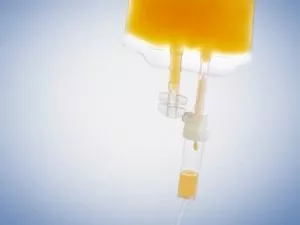A Rife machine is a device that emits electromagnetic waves at a low frequency to help treat cancer (as well as other conditions). The machine was invented in the 1920s by Dr. Royal Raymond Rife, Jr., an American scientist, and inventor.
The basic assumption is that every disease in the body emits a particular electromagnetic frequency and that the energy in the body needs to be balanced to avoid disease. By introducing the disease’s exact electromagnetic frequency to the body, the disease could be cured.
Dr. Rife alleged that every organism has a unique frequency at which it vibrates, and throughout this life, documented the frequencies of different pathogens. Today, Rife machine offers a non-invasive way to deliver these specific frequencies to the body to potentially fight cancer.
Could Rife Help Fight Cancer?
Although large clinical trials haven’t been conducted on using these machines for cancer, studies show promising evidence for the efficacy of electromagnetic fields as a therapy for cancer.
Here is Royal Rife’s report summary: “The first clinical work on cancer was completed under the supervision of Milbank Johnson, M.D., which was set up under a special medical research committee of the University of Southern California. Sixteen cases were treated at the clinic for many types of malignancy. After just three months, 14 of these so-called hopeless cases were signed off as clinically cured by a staff of medical doctors and Alvin G. Ford, M. D., pathologist for the group.”
How Does a Rife Machine Work Against Cancer?
What does a rife machine do? The machine emits low-frequency electromagnetic waves, which are administered to the body via electrodes. Compared to other machines that produce electromagnetic waves, such as x-ray technology, Rife emit very low radiation. Low-frequency electromagnetic waves, such as those used in Rife, may help reduce the proliferation of cancer cells.
Low-frequency electromagnetic waves may also help “regulate the expression of genes” in cancer by inhibiting cell division, according to research.
Electromagnetic waves have been studied for the last two decades in cancer research, although these machines are currently not approved by the Food and Drug Administration (FDA) for use in treating cancer.
Spooky2 vs. Alixor. Vs. Truerife : Which Rife Machine should you buy? >>
Research Supporting the Efficacy of Low-Frequency Electromagnetic Fields for Cancer Treatment
Researchers have studied different types of cancer cells to see if therapy using electromagnetic waves had any effect. One study (2012) showed that the growth of hepatocellular carcinoma (HCC), the most common type of liver cancer, as well as breast cancer, were “significantly decreased” when exposed to cancer-specific frequencies without affecting healthy cells.
Another study using breast cancer cells showed considerable changes in cancerous tissues treated by electromagnetic fields, including decreased tumor mass, cancer cell death, and reduction in blood vessels feeding cancer.
Other research used electromagnetic fields to treat breast and colon cancer cells. The results clearly showed the disintegration of cancer cells compared to untreated cells, resulting in early cell death in just three days. More research (2017) shows that low-frequency magnetic fields can inhibit lung cancer cell growth by killing cancer cells.
Ultimately, research indicates that treating cancer with intrabuccally administered electromagnetic fields is generally safe and well-tolerated in patients and may even lead to long-lasting therapeutic responses in patients with advanced cancer
How to Use a Rife Device
You can purchase a Rife machine online. Different manufacturers offer different devices, all intending to use specific frequencies to treat disease. Using a Rife is relatively simple and something you can do at home.
While the specific instructions of each rife machine will differ, treatment generally involves putting your feet on an electrical pad or holding plasma tubes that are attached to the Rife device. You may also be able to attach electrodes to your palms or feet. Some machines come with an electrode gel to help the electrodes better stick to the skin and avoid electrical shocks or burns resulting from improper contact between your skin and the electrode. Electromagnetic waves produced by the machine will go through your body once the process is initiated. People typically use the machine for just a few minutes several times a week.
Some research suggests that you can use electromagnetic waves with other cancer therapies. If you plan to use this therapy and are receiving professional cancer treatment, talk to your physician or practitioner about using this therapy in combination with other cancer treatments, including both conventional and alternative cancer therapies.
Tips for Achieving the Best Results with Rife Therapy
- Look for the most powerful device that will give you the most therapeutic healing session. Here is a shopping guide with lots of tips for buying the best machine for you.
- It is best to do multiple sessions back-to-back, daily if possible. The closer you can couple sessions together, the stronger the healing effects.
- Dress in comfortable attire and avoid wearing any metal including an underwire bra.
- Make sure you are well-hydrated and you have eaten alkalizing foods such as vegetables, dark leafy greens, fruits, seeds, and avocados.
- If you have a pacemaker, implanted pain modulator, insulin delivery systems, or defibrillator, because they have battery systems, consult a physician before using a Rife machine.
Rife Dangers
Most users of the Rife report minimal side effects, although some people have experienced rashes from electromagnetic waves or even electrical shocks. Following the instructions for your specific Rife device is essential. When done at tumor-specific frequencies, electromagnetic fields are not associated with any significant adverse side effects for patients, making rife dangers minimal.











